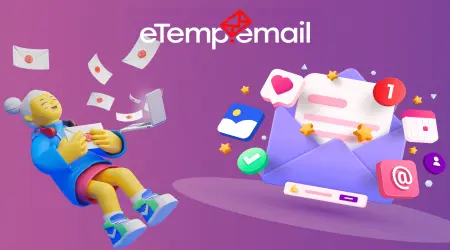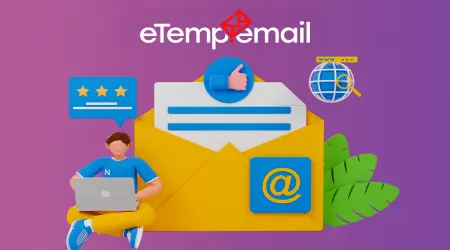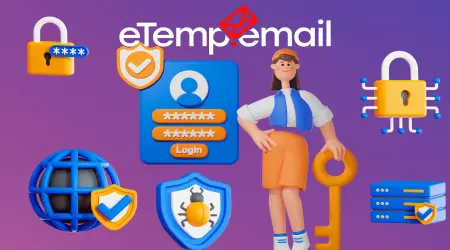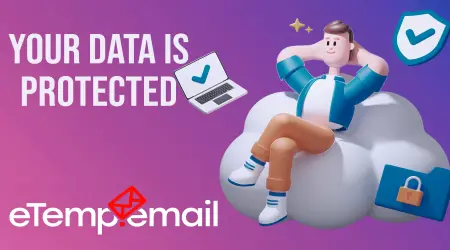
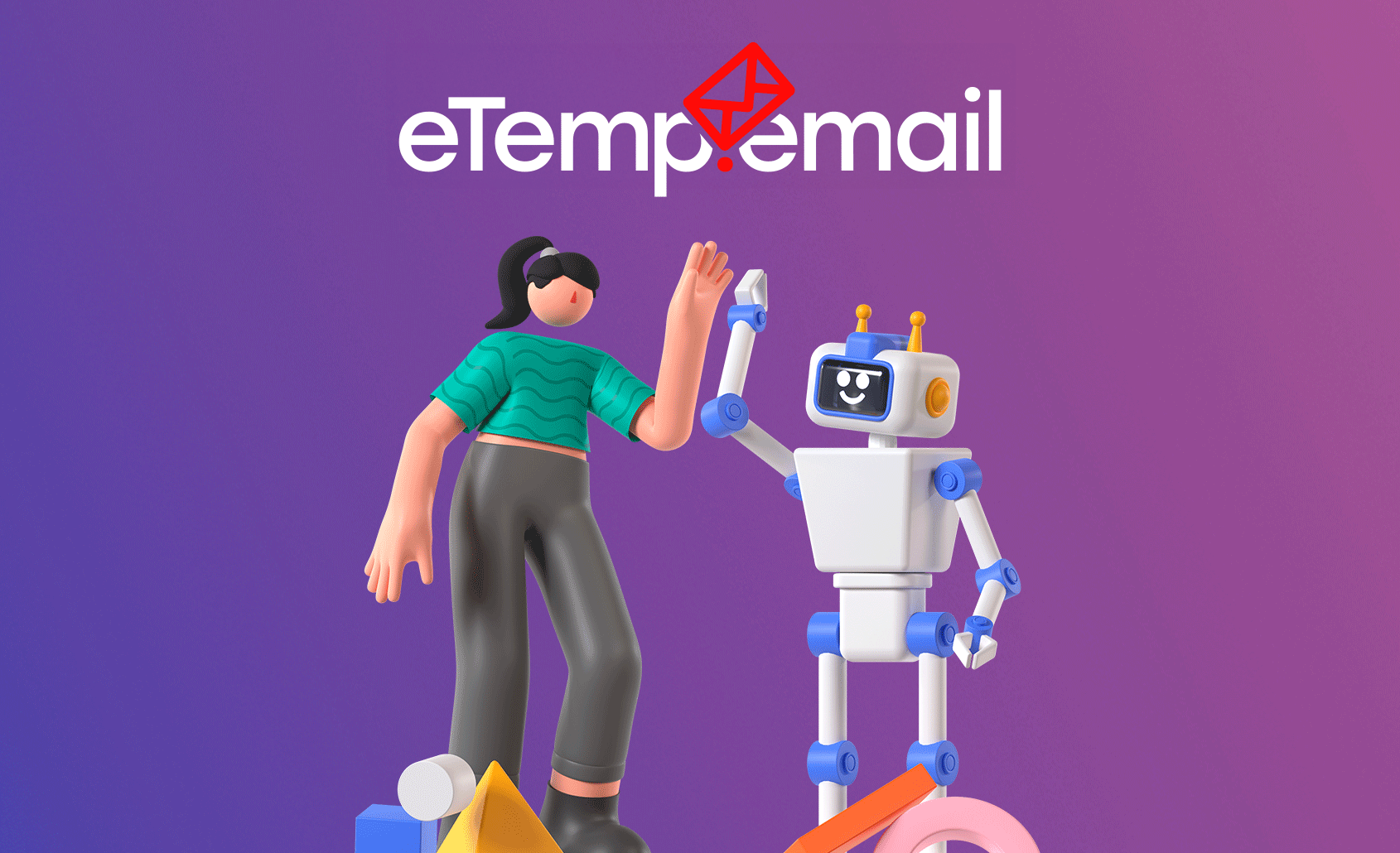
Next Generation AI: How Generative Models Are Changing Creativity in 2025
In 2025, Artificial Intelligence (AI) has transcended its role as a mere automation tool; it has emerged as a powerful collaborator in human creativity. Generative AI models, sophisticated neural networks capable of creating original text, images, music, and even video, are fundamentally transforming fields like art, design, content creation, and beyond.
But how exactly are these groundbreaking technologies reshaping the creative process? And why is data protection in the age of AI becoming more critical than ever before? This article will delve into how generative AI is shaping the future of creativity, explore its inherent risks, and explain how eTemp.email helps safeguard your privacy when engaging with today's cutting-edge AI technologies.
What Are Generative AI Models? A Technical Glimpse
Generative models represent a revolutionary type of artificial intelligence designed to create entirely new content from scratch. Unlike traditional AI that analyzes existing data to make predictions or classifications, generative models utilize deep learning techniques to understand the underlying patterns and structures within vast datasets. Based on this learned understanding, they can then generate original content that often mirrors human-created output in quality and style.
By 2025, technologies like DALL-E 4 (for image generation), GPT-5 (for advanced text generation), and MidJourney (for highly stylized visuals) have reached unprecedented levels of sophistication. They are capable of producing works of art, compelling narratives, and intricate musical pieces that are increasingly indistinguishable from those created by human artists.
Key Applications of Generative AI Today:
- Art and Design: Artists are leveraging AI to explore unique visual styles, generate abstract concepts, and create stunning digital art. Designers use AI to rapidly generate website layouts, mockups, product designs, and architectural visualizations in seconds, significantly accelerating the ideation phase.
- Music Composition: Neural networks are composing original soundtracks for films, video games, and even personalized background music for user experiences, adapting dynamically to mood, genre, and duration requirements. They can generate melodies, harmonies, and orchestrations across various styles.
- Content Marketing and Creation: Bloggers, marketers, and brands are utilizing AI to generate diverse content formats: from compelling ad copy, social media posts, and product descriptions to video scripts and unique meme concepts, saving immense time and resources in content production pipelines.
How AI Is Changing the Creative Process: Beyond Automation
Generative AI is not merely replacing human creativity; rather, it's augmenting and expanding human capabilities in profound ways. Here are a few key transformations we are witnessing in 2025:
Democratizing Creativity and Accessibility: Creating professional-grade content traditionally required specialized skills, extensive training, and often expensive tools. Generative AI lowers these barriers significantly. Now, almost anyone can use intuitive AI-powered platforms to generate high-quality images, refined text, or even basic musical compositions. For example, a small startup can create a unique, professional-looking logo in minutes, or an aspiring writer can overcome writer's block by generating creative prompts and drafts.
Enhanced Personalization and Customization: AI excels at tailoring content for specific audiences at scale. Marketers are using neural networks to create hyper-personalized advertising campaigns, product recommendations, and customer service interactions. Research from 2024 indicates that personalized AI-driven content can increase user engagement by 30-40% by delivering messages that resonate directly with individual preferences and behaviors. This extends to personalized learning content, news feeds, and more.
Unprecedented Speed and Scalability: Generative models enable the rapid creation of hundreds, or even thousands, of content variations in seconds. This is invaluable for processes requiring efficient iteration, such as A/B testing in marketing to identify the most effective ad creatives, or rapid prototyping in design to quickly visualize different design concepts. It also facilitates content localization across multiple languages and cultural contexts at speeds previously unimaginable.
Risks and Challenges of Generative AI: The Dark Side of Innovation
While generative AI offers immense opportunities, its rapid development also introduces new and significant threats to digital security and privacy.
- Synthetic Media and Misinformation: Generative models can be used to create highly convincing "deepfakes" (fake videos or audio of real people) and voice clones. These can be deployed for sophisticated scams, spreading misinformation, character assassination, or even political destabilization, making it increasingly difficult to distinguish reality from fabrication.
- Phishing and Fraud Evolution: AI can generate highly persuasive and grammatically flawless phishing emails, tailored to individual targets, making them harder to detect than traditional, often poorly written, phishing attempts. This elevates the risk of successful cyberattacks.
- User Data Collection and Privacy Threats: Many AI platforms, especially those that offer free or freemium services, collect vast amounts of user input data. This data isn't just used for model training; it can also be leveraged for user profiling, targeted advertising, or even shared with third parties. This poses significant privacy risks, as your creative ideas, personal queries, and even sensitive information you input into AI models could be collected and potentially misused or breached.
- Ethical and Copyright Concerns: The rapid proliferation of AI-generated content raises complex ethical questions regarding intellectual property rights (who owns the content generated by AI, or the data used to train it?), potential job displacement in creative industries, and the spread of algorithmic bias embedded in the training data.
How to Protect Yourself in the Age of AI: Practical Steps
When working with AI services, it's crucial to minimize the risks of data leakage and maintain your privacy.
- Use Temporary Emails for AI Platform Registrations: Many AI content generation platforms are new, and their data handling practices might not be fully transparent or robust. When signing up for new AI tools, experimenting with beta versions, or using services you don't fully trust, use a
temporary email address from eTemp.email What is a Temporary Email and Why You Need One - Be Mindful of Your Inputs: Avoid entering highly sensitive personal, financial, or confidential information directly into public AI models or platforms, even if you're using a temporary email. Assume anything you input might be stored or used for training.
- Implement General Digital Security Practices: Always use
strong, unique passwords Why You Get Hacked and How to Avoid It: 5 Key Causes of Data Breaches
The Future of Generative AI: Innovation Meets Responsibility
By 2030, experts predict that generative AI will become an integral and indispensable part of virtually all creative industries and personal workflows. We already see how:
- Movie studios are using AI to generate script ideas, prototype visual effects, and even create digital actors.
- Music platforms are integrating neural networks to generate personalized playlists, create dynamic background scores, and assist artists in composing.
- Educational platforms are offering AI-driven courses tailored to individual student requests and learning styles, providing adaptive content and feedback.
However, as the influence of AI grows, so does the paramount importance of ethics, regulation, and responsible use. Questions surrounding the ownership of rights to neural network-generated content, how to effectively regulate the use of deepfakes, addressing algorithmic bias, and managing job displacement remain open and require continuous dialogue and development.
Why eTemp.email Is Your Assistant in the Age of AI?
Working with innovative AI services requires a degree of caution. Signing up for new platforms, testing experimental tools, and experimenting with content generation can inadvertently put your data at risk. eTemp.email serves as your essential digital assistant by helping you:
- Create temporary email addresses in seconds: Get instant access to AI tools without lengthy registration processes.
- Avoid spam and phishing attacks: Keep your primary inbox clean and secure from unwanted marketing or malicious attempts associated with new AI service sign-ups.
- Maintain anonymity when testing AI tools: Explore and experiment with AI technologies without linking your personal identity to potentially unknown data collection practices.
- Ensure Data Cleanliness: All correspondence via eTemp.email is automatically deleted, leaving no long-term digital footprint.
Conclusion
Generative AI models in 2025 offer limitless opportunities for creativity, transforming everything from high art to everyday marketing. But with these incredible opportunities come inherent risks, particularly concerning your personal data and digital privacy. By adopting smart practices, such as leveraging trusted tools like eTemp.email for temporary registrations and being mindful of your inputs, you can enjoy the immense benefits of AI without compromising your security.
Try eTemp.email today and confidently open up the world of next-generation technology while safeguarding your digital peace of mind!
